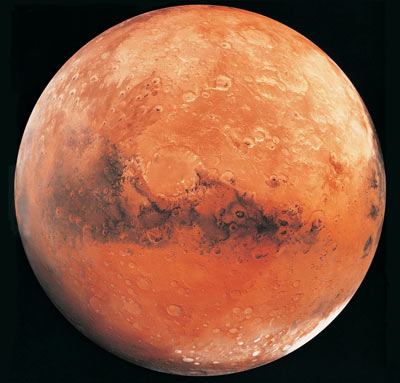Mars is ours!

The red planet.
April 30, 2014
Yes, you read that right. The endeavor to colonize the Red Planet is currently underway. After NASA’s announcement of the end of its participation in manned space travel, a private corporation would have to step forward to fulfill a function the government no longer could. Lockheed Martin, the largest provider of IT (information technologies) services, systems integration, and training to the U.S and Bas Lansdorp, Dutch Entrepreneur and engineer, would take up the reins. Grossing nearly 50 Billion dollars in sales in 2012, a large portion of which done with the U.S. Department of Defense and U.S. Federal Government agencies, it was ranked 58th in the world on the Fortune 500 list of largest industrial corporations. Up until 2013, however, the project was almost solely funded by Lansdorp who initially, determined to make his dream of mars colonization a reality, set up the business model. Human life on other planets may be closer than you think.
The voyage’s initial application period closed August 31, 2013. At this time, the only prerequisite for applicants stipulated they had to have attained at least 18 years of age. From a pool of 200,000 applicants paying minor application fees from $5-$55 depending on the country you live in ($38 in U.S.), a significant shortfall from the 1 million anticipated and millions of dollars short in the revenue those applications would have generated, the project has selected 1,058 applicants to move on to the next stage of selection. A more rigorous selection, the second phase of selection assessed physical and mental qualifications. As the project intends only to send 4 astronauts at a time with a one way ticket and no guarantee of return, it is imperative that each be as stable, healthy, capable and intelligent to ensure the success of the mission.
Of those who made the first cut, the makeup of the 1,058 applicants is quite diverse. From the 107 countries in which applicants were approved, the 5 largest contributors were the U.S. with 297 astronauts, followed by 75 from Canada, 62 from India, and 52 from Russia. Nearly 77 percent of the people who made the first cut are employed, while about 15 percent are still in school. About 55 percent of the applicants are male and most are quite young: 357 are under 25 and 415 are under 35, while just 26 are over 56. The oldest person to make it to the next round is 81. Norbert Kraft, Mars One’s Chief Medical Officer, announced at least 2 more rounds of cuts in 2014 and 2015 involving assessments based on simulation proficiency and group physical and emotional compatibility.
The first expedition is scheduled for 2018 to send an unmanned exploratory module as an advanced party for the initial 4 astronauts slotted to leave Earth for the final time in 2023. The exact dates and years in which Mars One plans to execute the various stages of the plan were chosen for the beneficial astronomical position of Earth and Mars. At this advantageous distance, the trip to Mars is estimated to take a little over 7 months, slightly longer than astronauts stay on the international space station. In the next decade, we could see the first human ever to be born on another planet in our solar system. It seems the gap between science and science fiction is shrinking…rapidly.


